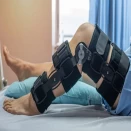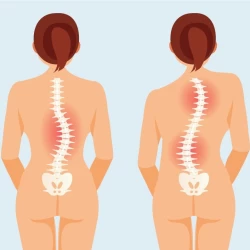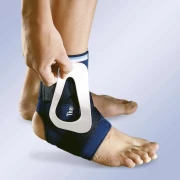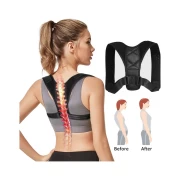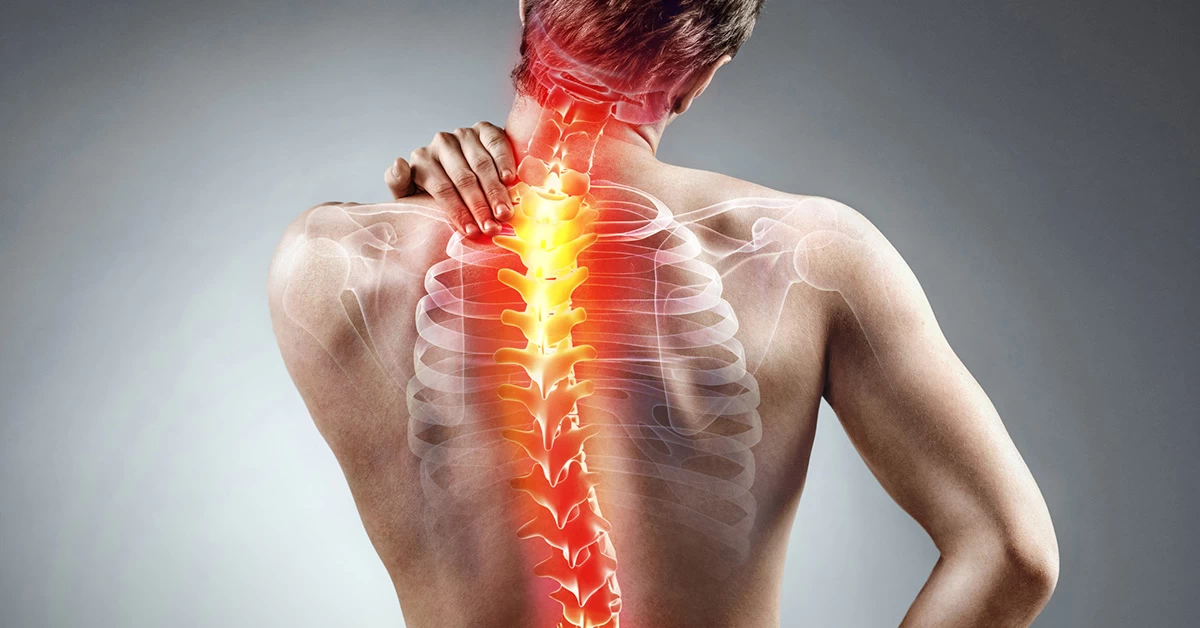
Scoliosis Diseases and Treatment Methods
- Scoliosis Diseases and Treatment Methods
DISEASES OF THE SPINE
Spine surgery includes operations and various interventions on the spinal cord and nerve roots and the spine that surrounds/protects this sensitive nerve tissue. Various diseases of the spine and spinal cord cause clinical diseases by causing structural, functional and/or mechanical disorders in these critical formations. Spine, spinal cord and nerve roots are affected by many disease groups, causing clinical signs and symptoms such as pain, nervous system function losses such as paralysis and sensory loss, limitation of spinal movements and deformities. Common disorders related to the spine can be summarized as lumbar and neck hernia, spinal calcification, degenerative diseases of the disc, spinal slippage, traumatic conditions involving the spine and surrounding tissues, kyphosis-scoliosis, tumoral diseases and narrow canal.
SHOULDER DISEASES
The shoulder joint, which allows us to use our arms every day, is the most mobile joint that allows movement in 6 directions. The shoulder joint, which is made up of muscles, bones, nerves, blood vessels, many ligaments and other supporting tissues, can occur due to various conditions affecting these structures. If the discomfort is not relieved immediately, the pain may continue to increase with permanent limitation of movement and arm weakness.
The probability of dislocation and fracture in our shoulder joints, which are more likely to be damaged than other joints, is quite high. Our shoulder pain can be caused by any problem in the shoulder area, or it can be caused by pain that radiates to the shoulder from other parts of the body. The most common cause of shoulder pain originating from the outside of the shoulder joint is a herniated neck. Shoulder diseases can arise from the shoulder region, as well as from heart, lung, liver and neck hernias.
What are Shoulder Diseases?
Shoulder diseases can be listed as follows:
- Shoulder Arthrosis – Shoulder Calcification,
- Rotator Cuff Tears,
- Shoulder Dislocation,
- Upper Arm (Proximal Humerus) Fractures,
- Acromioclavicular Joint Arthrosis,
- Frozen Shoulder,
- Shoulder Impingement Syndrome,
- and can be listed as Calcific Tendinitis.
Shoulder Diseases Cause?
The most mobile joint in the body is the shoulder joint. This leaves the shoulder joint vulnerable to certain injuries. Especially top-down throwing and throwing movements, housework and professional work with repetitive and frequent overhead movements, heavy loads on the shoulders (heavy carrying) cause excessive stress on the shoulders, especially around the shoulders and the mechanisms supporting the shoulders, as just mentioned.
These injuries can occur after high-energy traumas (traffic accidents, falls, sports injuries, etc.), as well as after repetitive low-energy traumas or repetitive excessive movements or wrong movements.
For this reason, shoulder diseases can be encountered frequently in the young, the elderly, the workers, the unemployed and those who do sports. It is more likely to be seen in people who play basketball, volleyball, tennis, handball, baseball, American football, and some sports activities.
ELBOW DISEASES
The elbow is a hinge-shaped joint between the arm bone, called the humerus, and the forearm bones, called the radius and ulna.
The arrangement and relationships of the bones allow a small amount of rotational movement in addition to the hinge movement. This rotational movement is evident in important functions such as bringing the hand to the mouth.
The main stabilizer (fixer) structure other than the bone structures that make up the elbow joint is the ligament called the ulnar collateral ligament on the inside.
The most common of the elbow injuries is on the outside, the most recognizable type of which is tennis elbow.
WRIST DISORDERS
It consists of the radius-ulna, which are the bones of the hand and forearm, the wrist joint, and small carpal bones, which are made up of 8 bones in 2 rows that articulate with each other, 5 metacarpal bones, and 14 finger bones.
The median, radial nerve, and ulnar nerve are the main nerves in the hand.
They manage complex and perfect movements of the hand.
Most of the hand movements occur through the muscles in the forearm, whose tendons extend to the hand.
Carpal Tunnel Syndrome
The findings of this disease; numbness and electrification in the hand (especially at night), when the hand opens something by turning it or during lifting movements, sometimes it can be summarized as pain extending to the shoulder.
These complaints occur after the median nerve is compressed in the tunnel present in the area where it passes from the wrist to the hand. Some of the tendons that give movement to the fingers of the hand travel within this tunnel.
Mild cases can be treated with a variety of wristbands or splints aimed at resting the wrist. Ozone applications can also be made inside the tunnel. Ozone application will reduce edema in the tunnel, the use of wristbands is appropriate in the follow-up. Surgical treatment is appropriate in cases that do not respond to this treatment or are diagnosed at a late stage. This is a procedure that can be performed with local anesthesia, which does not require hospitalization of the patient.
Trigger Finger
The mechanism of trigger finger disease is still not known exactly, but the course of the disease is well known. It is known that the tendon and its bed, which is responsible for the trigger movement in the fingers, are affected. The tendon structure is the structures responsible for maintaining the relationship between muscles and bones. There is a layer covering each tendon. In the sheath formed by the layer, the tendon moves within its bed by making a slip with the movement of the fingers.
Since the tendon sheath swells and thickens due to inflammation, the tendon encounters difficulties in the sliding movement it needs to make during finger movements. The symptoms, which are stuck in the damaged part of the sheath at first due to the decrease in movement and are only relieved with a jumping movement, are not treated and if the event progresses, the sheath gradually thickens and the tendon movement disappears completely and the finger remains locked in the trigger pull position.
DISORDERS OF THE HIP JOINT
Many ailments originating from the hip joint or adjacent areas can cause hip and groin pain. These can also develop as a result of wear and tear due to congenital, childhood and adolescence, traumas, aging or excessive use. Today, diagnosis of hip joint and surrounding disorders; It has been facilitated by reasons such as the increase in clinical knowledge and experience and the widespread use of magnetic resonance imaging methods.
KNEE JOINT DISEASES
Knee diseases can be caused by genetic factors as well as developing due to subsequent problems.
Those associated with trauma
A knee injury can affect the ligaments, tendons, or fluid-filled sacs (bursa) surrounding your knee joint, as well as the bones, cartilage, and ligaments that make up the joint itself. Some of the more common knee injuries include:
Anterior Cruciate Ligament (ACL) injury
The ACL is one of four ligaments that connect your shinbone to your thighbone. ACL injury is especially common in people who play basketball, football or sports that require sudden movements and struggle in the direction. More often, it is torn with the rotation of the knee. Most tears require surgery.
Fractures
Knee bones, including the kneecap (patella), can be broken during trauma such as motor vehicle accidents or falls. Although some simple fractures of the kneecap can be treated with a plaster cast, most fractures around the knee require surgery.
FOOT AND ANKLE DISEASES
Foot and Ankle Diseases. Our feet are the limbs on which we exert pressure throughout the day and are susceptible to injury as a result of pressure. Ensuring the comfort of our feet is one of the most important actions we have to do throughout our lives.
Shoes that are not chosen carefully and that disturb the feet negatively affect foot health and can cause many health problems such as pressing disorders, deformities in the toes, ingrown nails, and foot fungus. For this reason, we need to choose shoes that will not affect our foot health and make our feet comfortable, rather than color and model.
The most common ailment of the toe is hallux valgus, that is, toe protrusion. The aim of the treatment in this disease, which can be treated with surgical methods, is to correct the compression defect caused by the thumb protrusion. Many patients experience pain along with the protrusion. Hallux valgus, which can start even in childhood, can also affect other fingers if left untreated. In the disease, in which genetic factors play a role in its formation, the wrong choice of shoes can also pave the way for the disease. Since hallux valgus is a disease caused directly by high heels, it is more common in women.
After the disease progresses, it is not possible to cure the deformity with auxiliary tools such as externally used finger rollers and night splints. In order to prevent Foot and Ankle Diseases, surgical intervention should be performed according to the severity of the pain and deformity caused by the discomfort. The aim of the treatment is to eliminate the patient's complaints of pain and to reduce the difficulties in wearing shoes. The treatment method to be chosen for the recovery of the disease varies according to the point of the disease. The surgical methods that can be followed are; bone correction, joint correction of bone and soft tissue, joint freezing operations, surgical removal of the initial part of the first bone of the thumb. Which treatment will be chosen at which stage is decided by considering the age, expectations and complaints of the patient.
Another ailment is flatfoot disease. Flatfoot is the name given to the problem that the normal curvature of the foot is not as it should be. When the load that needs to be transferred from the heel forward cannot be transferred in patients, the problem of flat feet begins to occur. There are two types of flat feet, flexible and rigid. Flexible flatfoot looks curved when the foot is not on the ground, but disappears when the foot is on the ground. Flexible flat feet are usually diagnosed in childhood. On the other hand, there is no curvature in the patient's foot, whether it is on the ground or not. In the treatment of the disease, there are methods such as physical therapy, drug use, rest and changing shoes. If flat feet are at an advanced level, causing pain, difficulty in walking and shoe problems, surgical intervention is applied.
FRACTURES AND DISPLACEMENTS
The deterioration of bone integrity due to some blows or different reasons is called a fracture. Fractures can also occur spontaneously from time to time. But dislocation is not like this, so what should be done in cases of fracture dislocation.
What Are the Symptoms of a Fracture?
- Pain that increases intensely with movement
- Swelling in the area of the fracture
- Defects in the fractured area in terms of shape
- Bruising due to edema due to fracture
- Inability to move the area of the fracture
Types of Fractures
There are two different types of fractures, open and closed. To explain these;
Open fracture
In such types of fractures that carry the risk of infection or bleeding, the bone ends of the fractured area may come out of the skin. Depending on this situation, both tissue and deformities occur on the skin.
Closed Fracture
The name given to the general types of fractures that occur in the inner part of the body. In this type of fractures, no deterioration or injury occurs on the skin. However, there is deterioration in bone integrity depending on the degree of the fracture.
What are the Negative Situations That May Occur Due to Fractures?
Fractures in people's bodies for whatever reason may cause some negative situations. If the right techniques are preferred during the first intervention and subsequent treatment process, it is possible to get rid of fracture dislocations quickly.
One of the negative situations that may occur as a result of fracture; muscle injury due to fracture. Damage to the muscles also causes restrictions in movement.
Compression may occur in the vessels and nerves near the fracture site. In addition, coldness and lack of pulse can often be encountered in the same region.
Although the dislocation of the fracture varies from person to person, it is generally known that people with a fracture in any part of their body go into shock.
What are the Methods Applied in Fracture Treatment?
When people break a place in their body, they urgently seek a doctor because the severity of pain is high. However, sometimes there is no pain in cases such as arm or leg fracture.
What is Dislocation?
Injury of the joints, which is considered the junction point where two or more bones come together, is called dislocation.
It generally occurs in sudden movements or actions that the body shows as abnormal. In the period after its emergence, there may be a limitation of frames for a while.
The most common types of dislocations occur in the shoulders and fingers. In addition, elbows, hips and knees are among the regions with a high probability of dislocation.
It is also necessary to know the following detail; After a dislocation in a region, the probability of recurrence of the same situation is high.
What Are the Symptoms of Dislocation?
As a result of dislocation, bones are generally displaced. In fact, serious swelling may occur in the area of the dislocation.
It is normal not to recognize the dislocation in the first place. Deformities may occur in the area where it occurs. It is possible to list some of the symptoms that occur in case of dislocation as follows;
- A tingling sensation in the area of the dislocation
experience limitation of movement for a while
Pain or aches that vary in severity while moving
Abnormal deformity in the area
Numbness at or near the site of the dislocation
What Are the First Aid Interventions That Can Be Done in Case of Fracture Dislocation?
It is of great importance to know the correct first interventions when a fracture-dislocation case occurs in yourself or someone close to you at the time.
It is possible to prepare several items for First Aid interventions in case of dislocation;
- First of all, the fracture-dislocation part is correctly detected.
- But definitely not trying to replaceNo food is given orally to the patient.
- Details such as heart rate, skin color and skin temperature in the area of the dislocation are checked.
- Most importantly and absolutely necessary medical help is requested.
How is the Fracture Dislocation Healing Process?
Dislocation, which is at the beginning of the damage to the joints, is always a situation that needs urgent and quick intervention. In order to say something clear about the treatment process and the estimated time period for the healing of the fracture dislocation, it should be determined in which region it is.
How Is Fracture Dislocation Diagnosed?
There are two basic ways to be sure when a condition such as a fracture or dislocation is suspected in the patient.
X-ray
Thanks to the x-ray, it is possible to determine the degree of fracture dislocation damage in the joints and to determine the treatment method.
MR
It would be more correct to undergo MRI for dislocation cases involving softer tissues. Doctors decide which film the patients will make.
How Is Dislocation Treated?
There are multiple methods that can be applied for dislocation treatment. To briefly list these methods as follows;
Seating
Each doctor may try different methods in the treatment of dislocations. Some doctors try to keep the dislocation in place by making the patient do some movements. Sometimes, general or local anesthesia may be required in this treatment method, depending on the situation.
Pain killer
After a while, after the bones are placed in place, negative conditions such as pain or ache may occur. As a result, patients may need to use pain relievers.
Fixing
It is an important detail for the bones to remain immobile for a period of time after they are set in place, in order to regain their former function. In order for the bones to remain immobile and not force the patient, plaster, splint or different materials are used to keep them stable.
Operation
Although not very intense, surgical operation may be required in some cases of dislocation.
